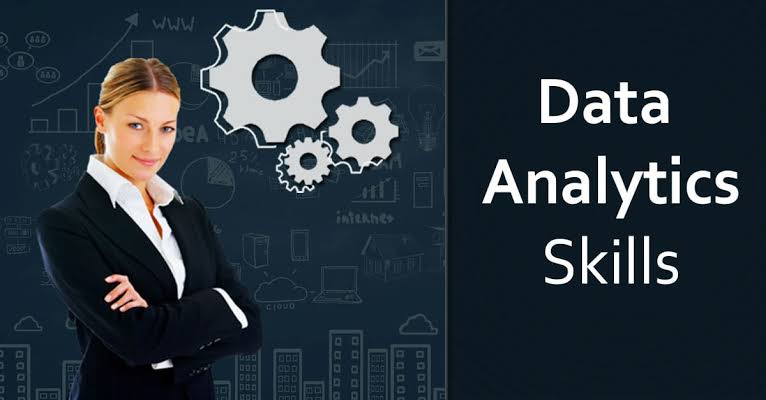From attention to detail to mastery of Python and R, the top 10 data analysis skills in 2025 highlight the combination of technical knowledge, analytical thinking, and business understanding required to succeed. Companies that prioritize these skills in their workforce will be better equipped to navigate challenges and seize opportunities in today’s data-driven economy.
Data has become one of the most valuable assets for modern businesses. Organizations are relying on analytics not only to measure performance but also to predict trends, improve efficiency, and create strategies that give them an edge in competitive markets. To achieve this, professionals need to master specific data analysis skills that help them interpret raw data and turn it into actionable insights. As of 2025, the demand for data-savvy professionals continues to grow, and businesses are increasingly prioritizing these essential skills. Below are the top 10 data analysis skills for business ranked from 10 to 1.
10. Attention to Detail
Data analysis often involves working with large datasets where small errors can completely change the outcome of a report or strategy. Attention to detail ensures accuracy in cleaning, organizing, and interpreting data.
Business leaders rely on accurate insights to make critical decisions. A single overlooked error can lead to poor strategies or financial losses. Analysts with a sharp eye for inconsistencies, missing values, or anomalies contribute significantly to reliable results.
9. Communication Skills
Numbers alone do not drive decisions; how those numbers are explained does. Communication skills help analysts translate complex findings into simple, clear, and engaging insights that business leaders can act upon.
Data storytelling, the ability to present insights in a structured narrative, is particularly valuable. This skill involves using charts, dashboards, and concise explanations to ensure stakeholders fully understand the implications of the data.
8. Business Acumen
Understanding business operations and industry dynamics is as important as knowing statistical tools. Business acumen enables analysts to connect data patterns with real-world business challenges, creating insights that are both relevant and actionable.
For example, an analyst with strong business sense can interpret sales data not only in terms of revenue but also in terms of customer behavior, supply chain efficiency, and market trends. This broader perspective adds depth to decision-making.
7. Problem-Solving Ability
At its core, data analysis is about solving problems. Whether it is optimizing marketing campaigns, reducing operational costs, or forecasting demand, problem-solving is the skill that guides analysts through identifying issues, analyzing potential solutions, and recommending the best course of action.
Critical thinking and creativity are central to problem-solving, helping analysts go beyond surface-level findings and uncover hidden opportunities or risks that businesses might otherwise miss.
6. SQL and Database Management
SQL remains one of the most essential tools for working with structured data stored in relational databases. Business analysts frequently use SQL to query, update, and manage datasets.
In addition, understanding database structures and management ensures analysts can efficiently handle large volumes of business data. With companies relying heavily on customer, financial, and operational databases, SQL knowledge is indispensable.
5. Data Cleaning and Preparation
Raw data is rarely ready for analysis. Analysts spend a large portion of their time cleaning and preparing datasets, removing duplicates, handling missing values, and standardizing formats. This skill is crucial because inaccurate data leads to misleading conclusions.
Strong data cleaning practices ensure reliability in every stage of analysis. Businesses benefit when data is consistent and trustworthy, especially when making high-stakes decisions.
4. Data Visualization
The ability to create compelling visuals from data is one of the most impactful skills in business analysis. Tools like Tableau, Power BI, and advanced features in Excel allow analysts to turn numbers into charts, dashboards, and interactive reports.
Visualizations help stakeholders quickly grasp trends, patterns, and anomalies that would otherwise be hidden in raw datasets. Effective visualization makes insights actionable, bridging the gap between technical analysis and strategic decisions.
3. Statistical and Mathematical Knowledge
Strong foundations in statistics and mathematics are necessary for meaningful data analysis. Concepts such as probability, regression, hypothesis testing, and variance analysis help analysts make sense of data beyond simple descriptive measures.
For business, these methods support predictions, risk assessments, and performance evaluations. Analysts who can apply statistical models effectively provide deeper insights that drive smarter strategies.
2. Microsoft Excel Mastery
Even with advanced analytics tools available, Excel remains a universal standard in business environments. Its versatility in handling data, applying formulas, creating pivot tables, and generating quick visualizations makes it a must-have skill.
Excel is often the first tool managers turn to when analyzing financial statements, sales data, or performance metrics. Analysts who can maximize Excel’s advanced features add immediate value to business operations.
1. Proficiency in Python and R
At the top of the list are programming skills, specifically in Python and R. These languages have become the backbone of modern data analysis because they enable automation, advanced statistical modeling, and machine learning integration.
Python is highly flexible, with libraries such as Pandas, NumPy, and Matplotlib making it perfect for business analytics. R, on the other hand, is powerful for statistical analysis and data visualization. Professionals skilled in these tools can process massive datasets and uncover insights that traditional methods cannot achieve.
Conclusion
Data analysis has become central to business growth, innovation, and competitiveness. While technical expertise is critical, skills such as communication, problem-solving, and business acumen are equally important in turning insights into real-world impact.
